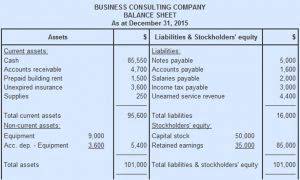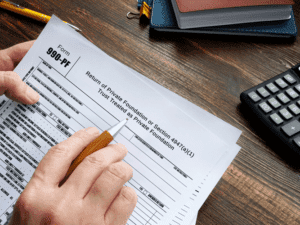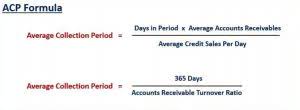
The common methods are straight-line, declining balance, sum-of-the-years digits, and production units. Each method has its own advantages and disadvantages, so it is important to understand which one works best for your particular situation. Depreciation comes from several factors, including the age and type of the asset, how long it serves its purpose, and the asset’s condition at acquisition. Generally speaking, assets that are used more often or in better condition depreciate faster than those that are used less often or in worse condition. Many businesses opt for a salvage value of zero as many assets are used until they are worn out, and technology equipment quickly becomes obsolete.
- Using the straight line depreciation method, the business charges the same depreciation expense every accounting period.
- It reflects the reality that assets lose value over time through use and obsolescence.
- Each list should monitor the purchasing of all assets according to an approved capital project number.
- By depreciating an asset, a portion of its cost can be reported as an expense in the periods the asset is used.
- When an asset is finally retired, a journal entry is made to remove the asset from the accounting system.
- This article delves into the different types of non-depreciable assets, highlighting their characteristics and implications for businesses.
Eligible Property
Examples include a change in use resulting in a shorter recovery period and/or a more accelerated depreciation method or a change in use resulting in a longer recovery period and/or a less accelerated depreciation method. The numerator of the fraction is the number of months (including parts of months) the property is treated as in service in the tax year (applying the applicable convention). If there is more than one recovery year in the tax year, you add together the depreciation for each recovery year.
How Is the Depreciation Deduction Figured?

Tara is allowed 5 months of depreciation for the short tax year that consists of 10 months. The corporation first multiplies the basis ($1,000) by 40% (the declining balance rate) examples of depreciable assets to get the depreciation for a full tax year of $400. The corporation then multiplies $400 by 5/12 to get the short tax year depreciation of $167. You also generally continue to use the longer recovery period and less accelerated depreciation method of the acquired property. If you hold the property for the entire recovery period, your depreciation deduction for the year that includes the final month of the recovery period is the amount of your unrecovered basis in the property.
What is the most common depreciation methodology used?
The following table shows the declining balance rate for each property class and the first year for which the straight line method gives an equal or greater deduction. On July 2, 2022, you purchased and placed in service residential rental property. You used Table A-6 to figure your MACRS depreciation for this property. You placed property in service during the last 3 months of the year, so you must first determine if you have to use the mid-quarter convention. The total bases of all property you placed in service during the year are $10,000. The $5,000 basis of the computer, which you placed in service during the last 3 months (the fourth quarter) of your tax year, is more than 40% of the total bases of all property ($10,000) you placed in service during the year.

DDB is an Accelerated Method of Depreciation
You refer to the MACRS Percentage Table Guide in Appendix A and find that you should use Table A-1. Multiply your property’s unadjusted basis each year by the percentage for 7-year property given in Table A-1. You figure your depreciation deduction using the MACRS Worksheet as follows. You can figure it using a percentage table provided by the IRS, or you can figure it yourself without using the table.
An expense reported on the income statement that did not require the use of cash during the period shown in the heading of the income statement. Also, the write-down of an asset’s carrying amount will result in a noncash charge against earnings. Hence, it is important to understand that depreciation is a process of allocating an asset’s cost to expense over the asset’s useful life.


Once organizations complete the sale of an asset, they must https://www.bookstime.com/ credit the sale proceeds to the asset account. Let us look at an example to understand how businesses can record the disposal. All information published on this website is provided in good faith and for general use only. We can not guarantee its completeness or reliability so please use caution. Any action you take based on the information found on cgaa.org is strictly at your discretion.
When Do You Recapture MACRS Depreciation?
- The land improvements have a 13-year class life and a 7-year recovery period for GDS.
- Last year, your depreciation was $2,144 ($15,000 × 14.29% (0.1429)).
- Enter the appropriate recovery period on Form 4562 under column (d) in Section B of Part III, unless already shown (for 25-year property, residential rental property, and nonresidential real property).
- The purpose of depreciating assets is to match the expense of the asset to the income it generates each accounting period, a concept known as the Matching Principle in accounting.
- Tangible assets encompass physical assets with a determinable lifespan and can depreciate over time.
In 2024, Beech Partnership placed in service section 179 property with a total cost unearned revenue of $3,100,000. The partnership must reduce its dollar limit by $50,000 ($3,100,000 − $3,050,000). Its maximum section 179 deduction is $1,170,000 ($1,220,000 − $50,000), and it elects to expense that amount. The partnership’s taxable income from the active conduct of all its trades or businesses for the year was $1,110,000, so it can deduct the full $1,110,000. It allocates $40,000 of its section 179 deduction and $50,000 of its taxable income to Dean, one of its partners. Notice that non-depreciated assets can include both fixed assets, like land, and current assets, like investments.
